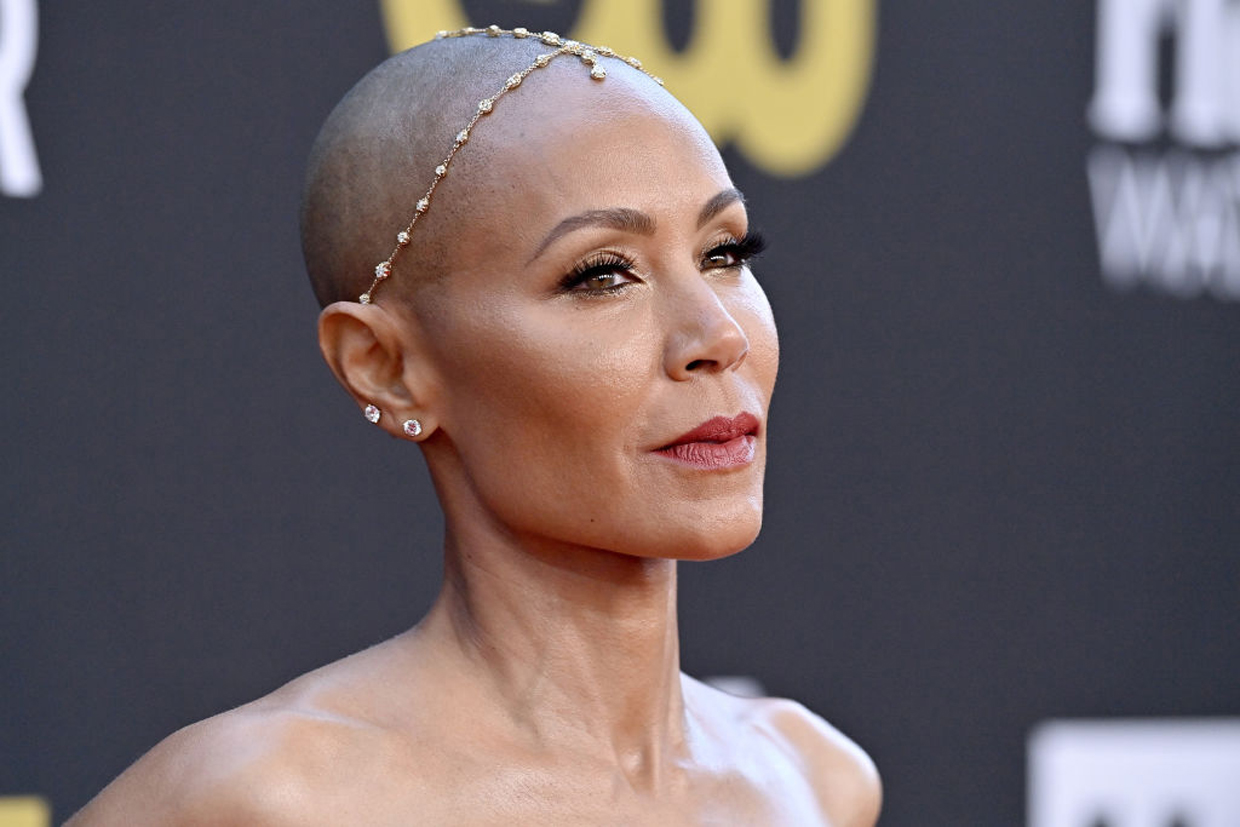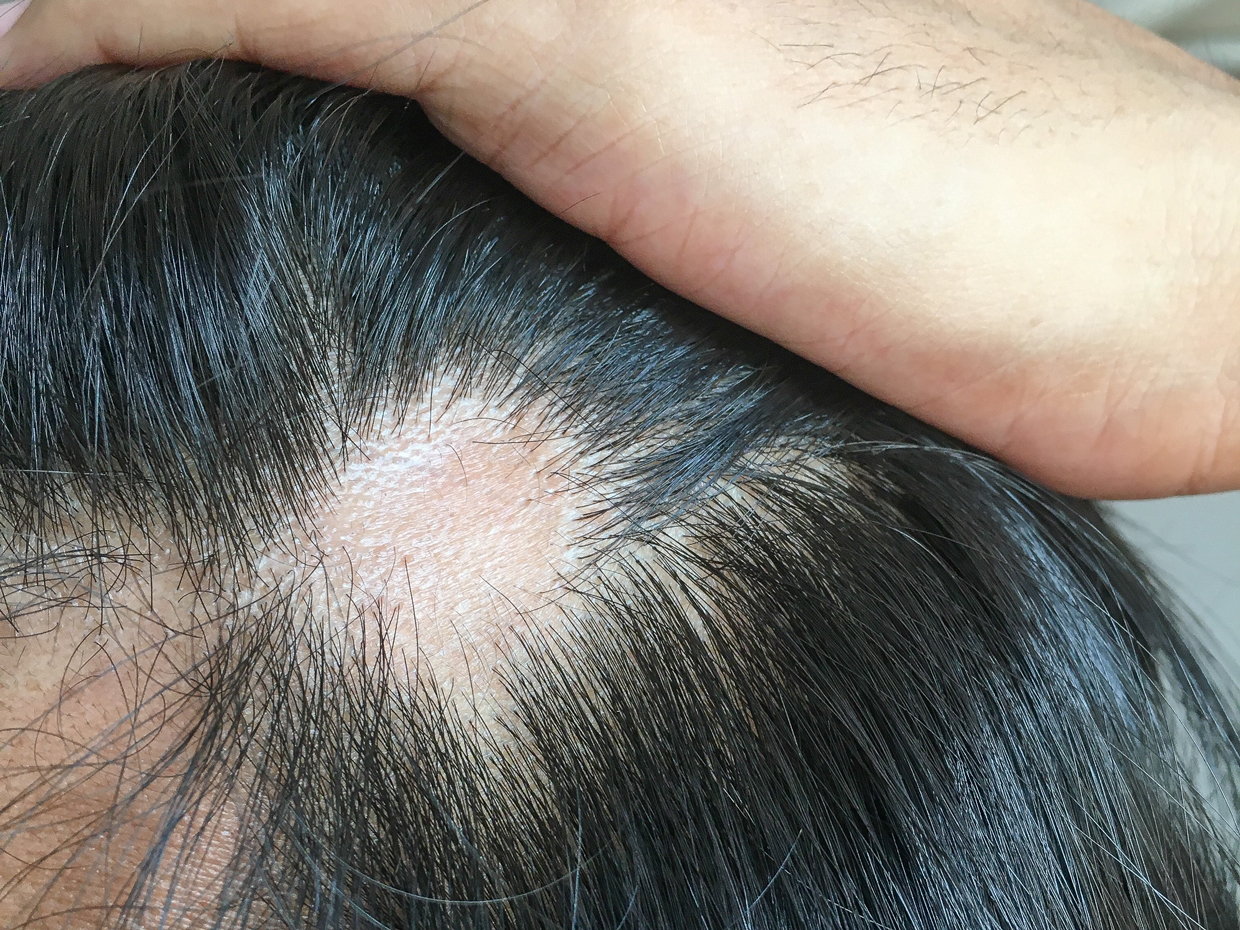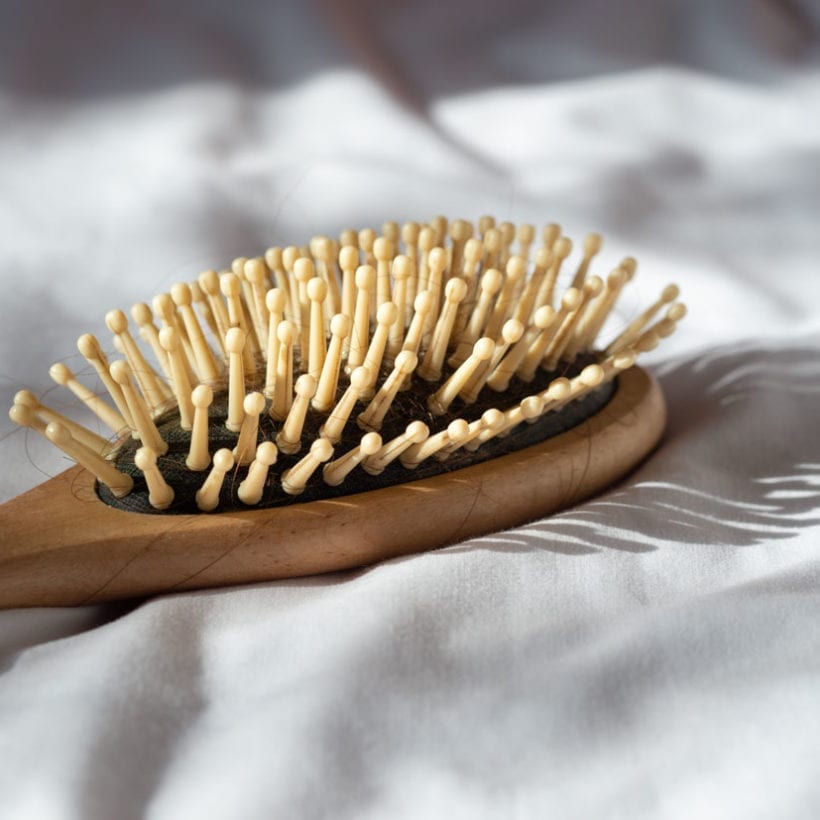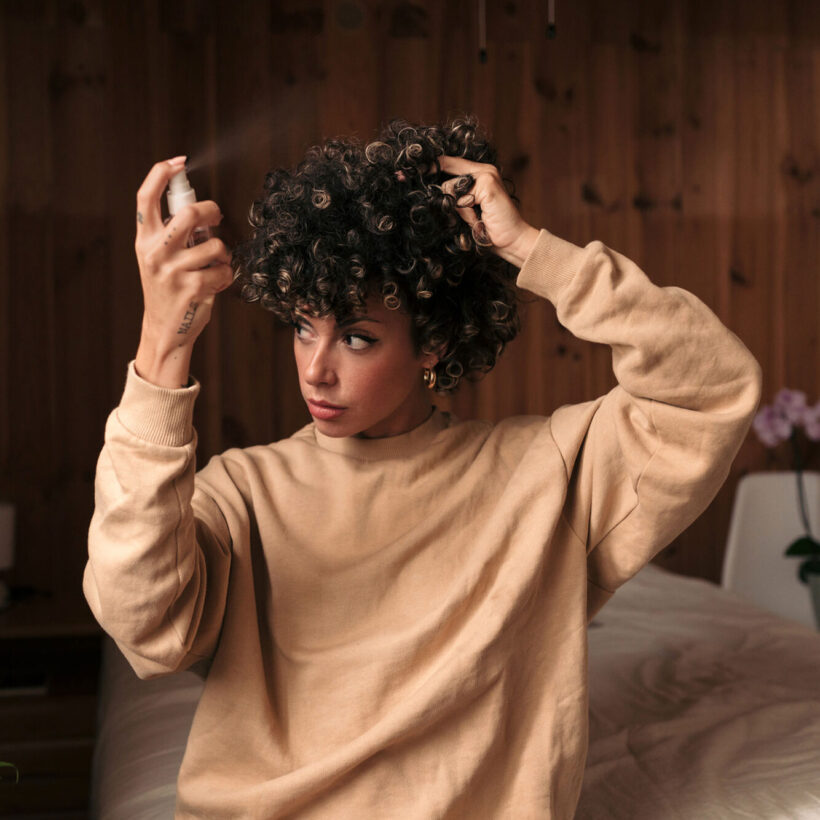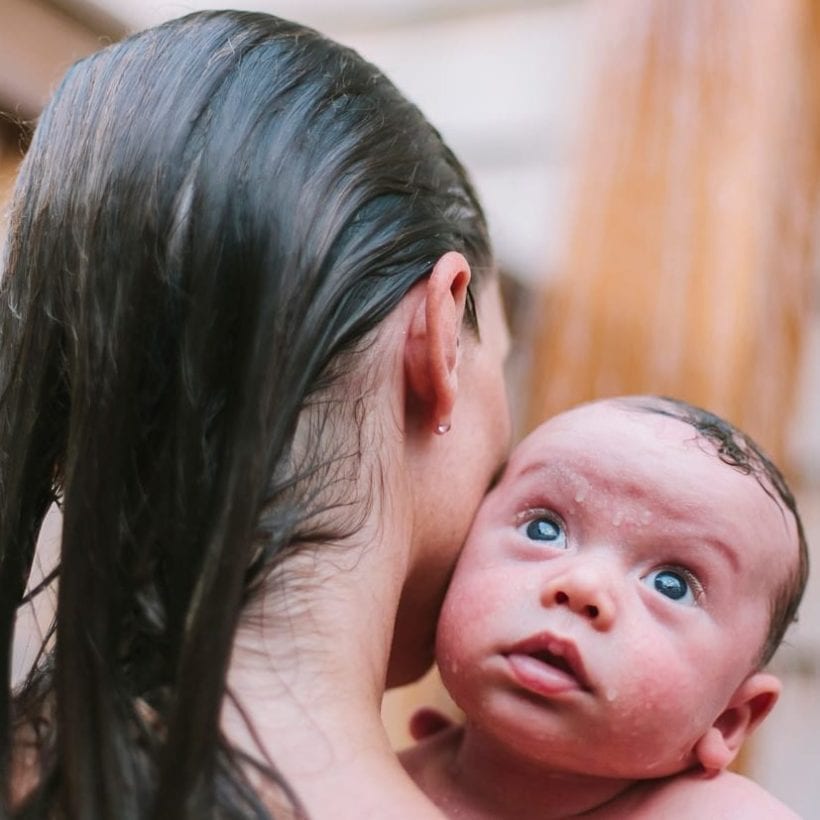As we get older, some hair loss — medically called alopecia — is to be expected. But if you have a specific type of alopecia called alopecia areata, you can experience baldness or bald patches at any age. The autoimmune skin disease can cause hair loss just on your scalp or all over your whole body (like your beard, eyebrows, lashes, or arms and legs). It usually starts as a round, approximately nickel-sized spot on your head or body. Types of alopecia areata include:
- Alopecia Totalis: An individual loses all the hair on their scalp
- Alopecia Universalis: A rare condition, this leaves your body hairless from head to toe
Sometimes the hair grows back and other times it’ll fall out again, plus there isn’t definitive treatment, though there are options that could help with regrowth. That’s why it’s important to talk to your own dermatologist about the next steps for your personal journey, as the severity of alopecia areata looks different for everyone. Meanwhile, we tapped Dr. Christine Shaver, hair loss expert and hair restoration surgeon at Schweiger Dermatology Group, to give us a quick download on alopecia areata to get a better understanding of the condition.
Does alopecia areata affect a certain demographic more than others?
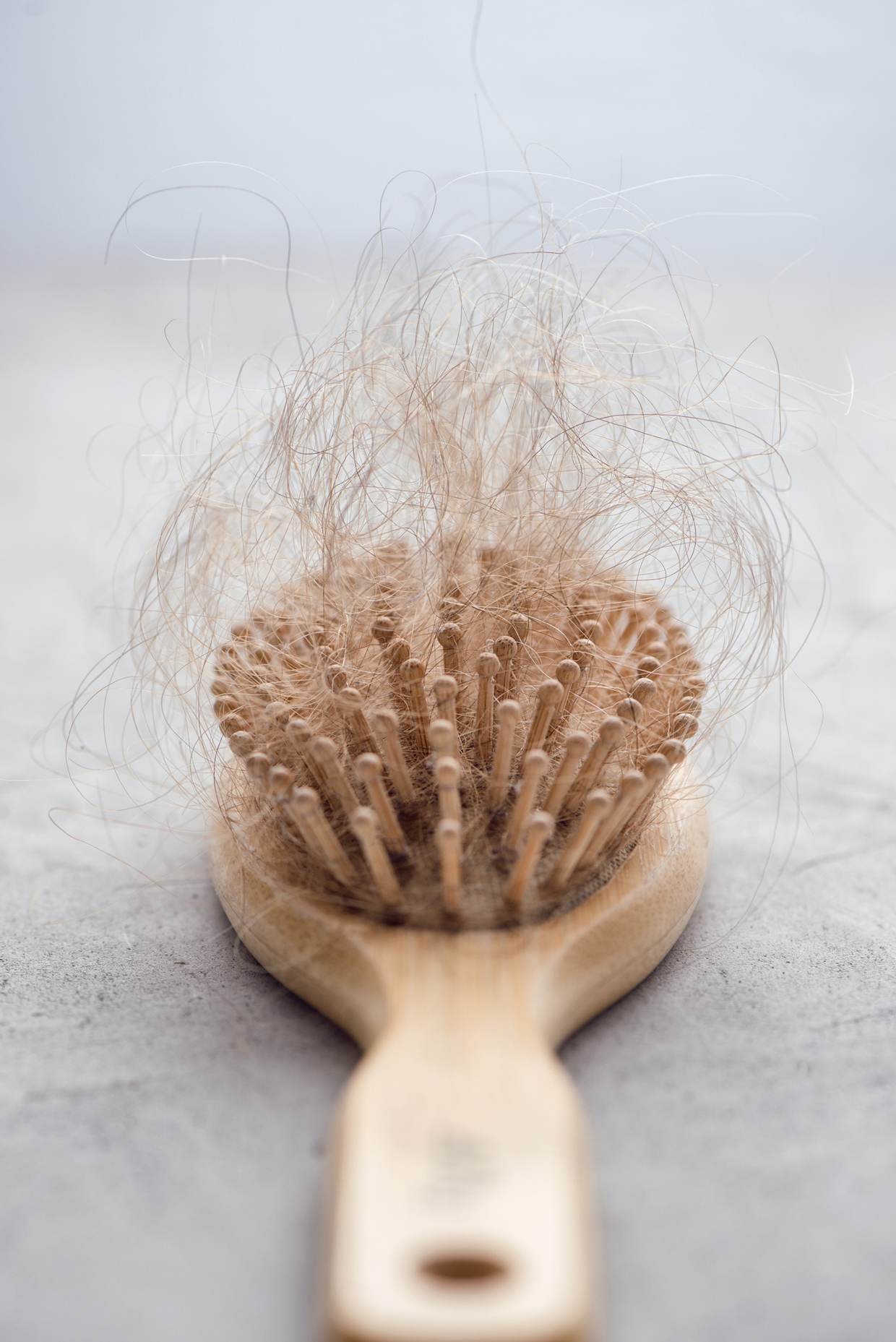
“Alopecia areata is often more common in younger patients,” says Shaver. Most people develop it by the time they turn 30. According to the American Academy of Dermatology Association, 50% of those with alopecia areata see their hair regrow within a year without treating it.
How does it get diagnosed?
“Most importantly, a doctor will first need to take a very detailed history. They’ll elicit the timing, the onset, how rapidly it occurred, and the severity. Once they get an idea for that, then they’ll have to examine the hair in the scalp. And so, different types of conditions look a different way underneath what’s called dermoscopy, which is using kind of like a lighted magnifying glass to kind of look very closely at the scalp. So, genetic thinning looks a certain way and it causes hair shafts to miniaturize or thin and shrink over time. This is compared to other types of inflammatory hair loss — it can lead to redness of the scalp and a buildup of scale, sometimes around the base of the hair shaft. Then there’s also a test called a hair pull test, which is when the doctor will grab a small collection of hair and just gently pull. If more than 20% of the hairs are pulled from the scalp, that’s a sign of shedding, so that can give you an idea that there’s telogen effluvium [a.k.a. hair shedding] going on. Finally, if the diagnosis is still unclear, your doctor can do a scalp biopsy to see what phase of the hair follicle each hair is in and look for things like inflammation or scarring,” says Shaver.
When should you see your doctor?
“Anybody who’s experiencing a new onset of noticeable hair loss — especially with any type of symptoms like itching, tingling, or scaliness — should be seen by a board-certified dermatologist. I have a low threshold to seek help because it can really make a difference to get treatment earlier rather than later,” says Shaver.
Is regrowth always possible?
“Not always. When hair loss has progressed to advanced inflammation leading to scarring, hair is unable to come through the scarred area, so regrowth is not possible. Alopecia areata is responsive to anti-inflammatory scalp injections, which can calm the autoimmune attack of the hair follicles. But if they’re uncontrolled for quite some time and scarring hair losses are present, that is actually very difficult to get the hair back,” says Shaver. It’s important to note that some patients might want to use wigs and extensions to cover up patchiness or baldness. “However, they can often worsen hair loss from the traction of attaching and detaching them,” she adds.
Do you think people necessarily need to seek treatment?
“It’s often more about cosmetic improvement [than a necessity]. Hair loss is really impactful on daily wellness and self-esteem. So, it really is important that if someone’s noticing progression, they should seek out help so that they can get resolution and treatment sooner rather than later,” she says.

How does alopecia areata affect your beauty routine?
The good news is your existing hair care routine doesn’t have to drastically change if you’ve been diagnosed with alopecia areata. Regularly cleaning the scalp is the first step to scalp health, and if there is a condition that needs to be treated like dandruff, scaliness or dryness, seeking a dermatologist’s help to get a medicated shampoo of varying strengths is the most appropriate,” she says. On newly affected skin, she suggests to avoid incorporating exfoliants or new ingredients as your scalp might be experiencing sensitivity in that area. And, “since alopecia exposes your scalp, even more, to direct sun exposure, protecting it with a hat and SPF can prevent damaged skin, which can lead to less growth,” says Shaver.
We only recommend products we have independently researched, tested, and loved. If you purchase a product found through our links, Sunday Edit may earn an affiliate commission.
